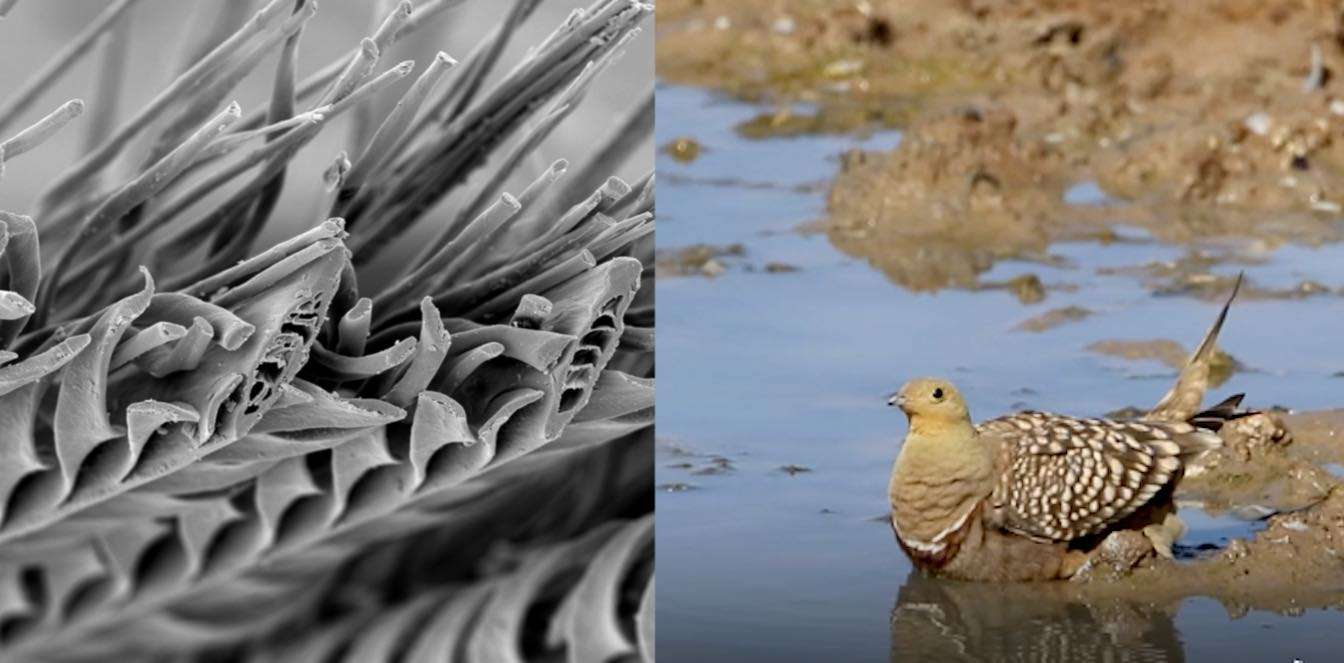Nonprofit is Training Rats to Sniff Out Tuberculosis, More Sensitive Than Microscope Testing
Kenya and Tanzania, they are utilizing rats to cure disease rather than cause it, and to be a member of society, rather than an outcast.

The ingenious and unique feathers of a beloved African bird could provide the inspiration for space-age water bottles which keep liquid still whilst we move.
The Namaqua sandgrouse, or "kilkamaine"— an Afrikaans word for the sound they make, is a desert specialist whose breast feathers can soak up water like a sponge and keep it stored even while the bird is flying 40 mph.
This clever adaptation allows it to get water from pools and transport it 20 miles back to the nest for its chicks.
The fascinating bird has long been the subject of scientific interest due to this incredible water-carrying talent, and now a team of American researchers was able to demonstrate how these feathers work.
The study authors hope the new discovery could lead to innovative new products including water bottles that hold water to prevent annoying sloshing around, and netting which can collect and retain water from fog.
The collaborative research team, from both Johns Hopkins University in Baltimore, Maryland, and the Massachusetts Institute of Technology (MIT) teamed up to study how the feathers of the desert-dwelling sandgrouse so successfully store water by using scanning electron microscopes, microcomputed tomography, and 3D videography to see the feathers in the greatest detail.
The team looked at the details of each feather shaft, which measures just a fraction of the width of a human hair—as well as the even more minuscule individual barbules of the feathers.
Then they dunked the dry feathers in water whilst magnified, pulled them out, and submerged them again—emulating a male sandgrouse at a watering hole.
The study, published today in the scientific journal The Royal Society Interface, found that individual feathers held the water through a forest of barbules near the shaft, working together with the curled barbules near the tip acting almost like caps.
The authors write how the components in the feathers were optimized in several ways to hold and retain water, including the way they bend, how the barbules form protective, tent-like clusters when wet, and how tubular structures within each barbule capture water.
"It's super fascinating to see how nature managed to create structures so perfectly efficient to take in and hold water," said study co-author Jochen Mueller, an assistant professor at Johns Hopkins' Department of Civil and Systems Engineering. "From an engineering perspective, we think the findings could lead to new bio-inspired creations."
The products which could benefit from the research include fog nets to capture moisture from the air in desert regions, or medical swabs that would be better at holding the liquid they absorb.
The team additionally computationally modeled the water intake of the feathers and expects their findings to influence future engineering designs that require controlled absorption, secure retention, and the easy release of liquids.
SHARE This Nature-Inspired Work With Your Friends…
Be the first to comment